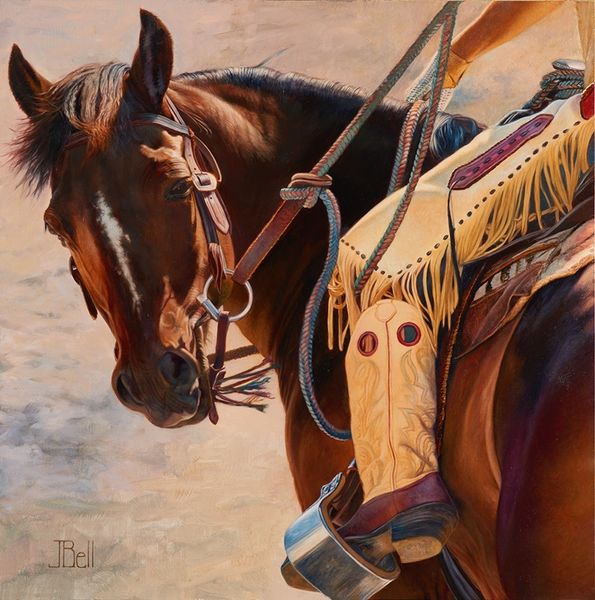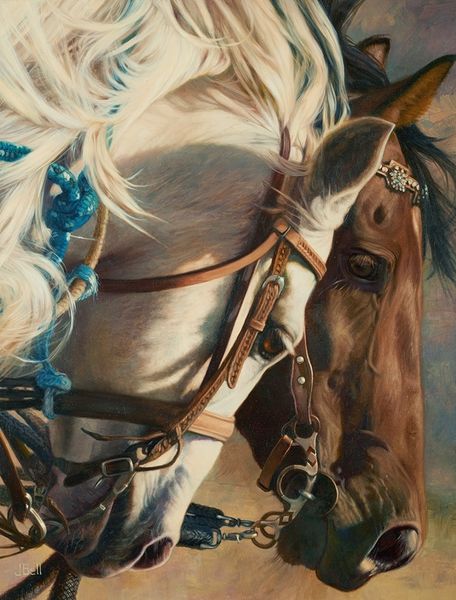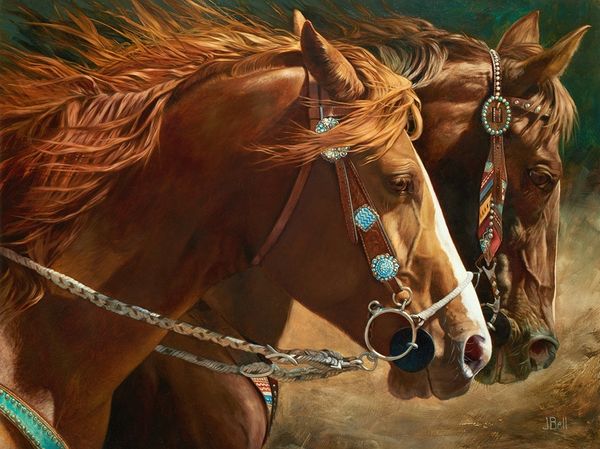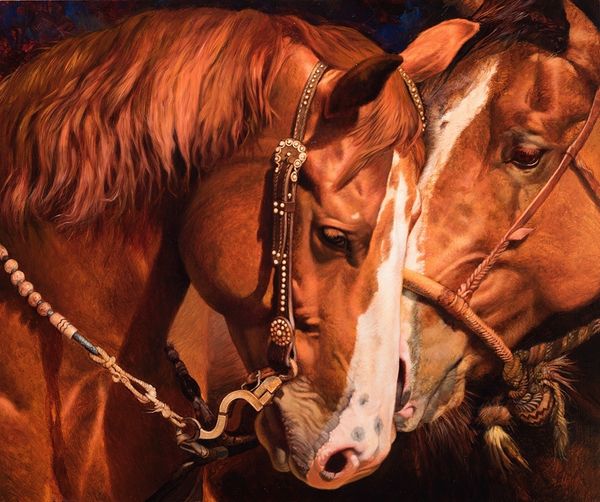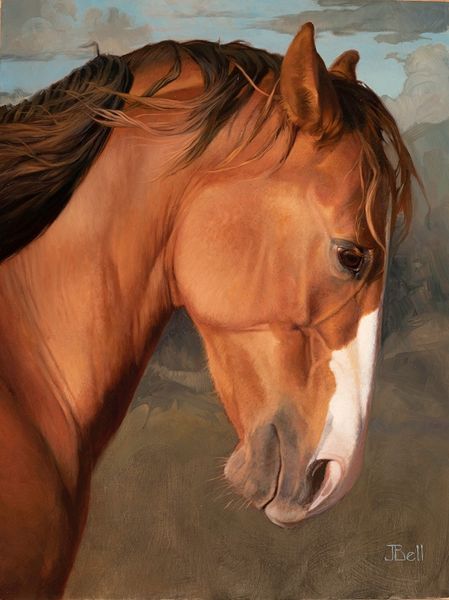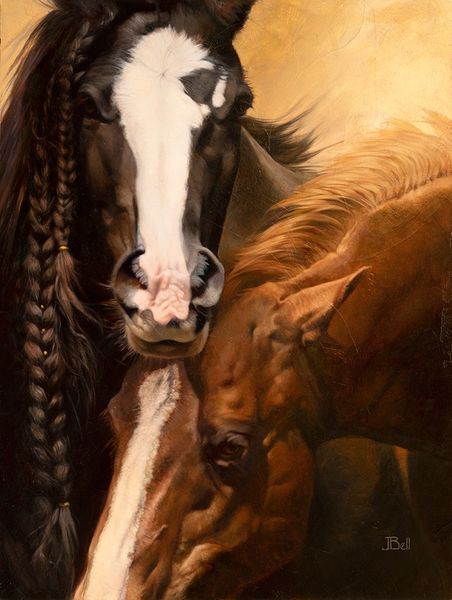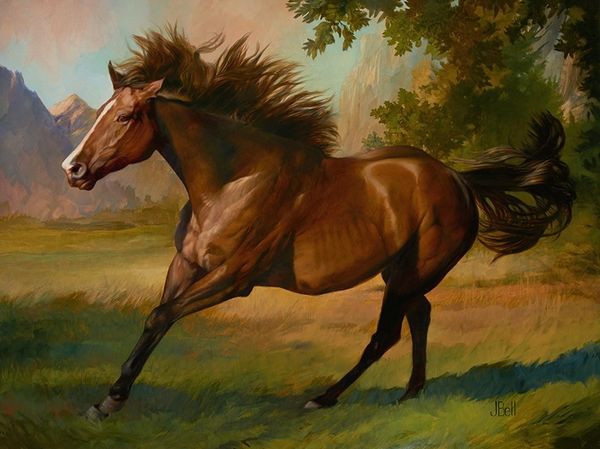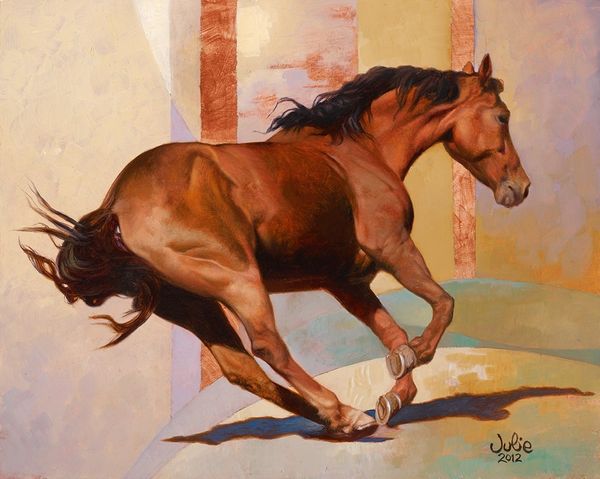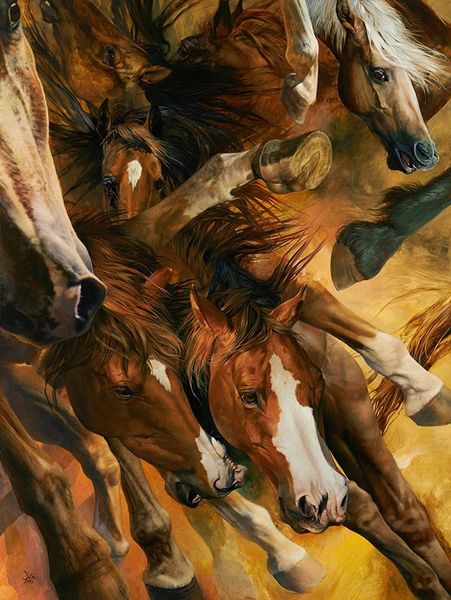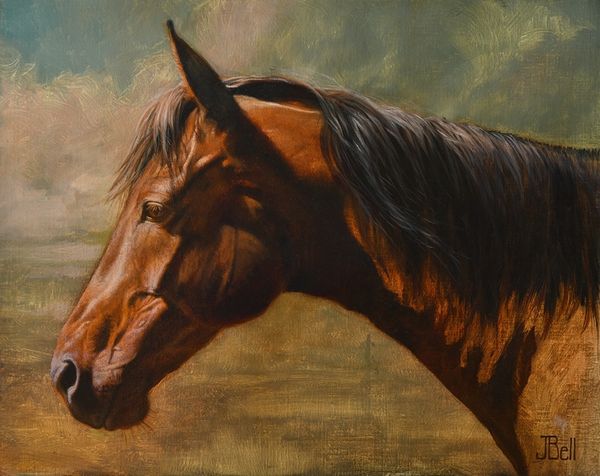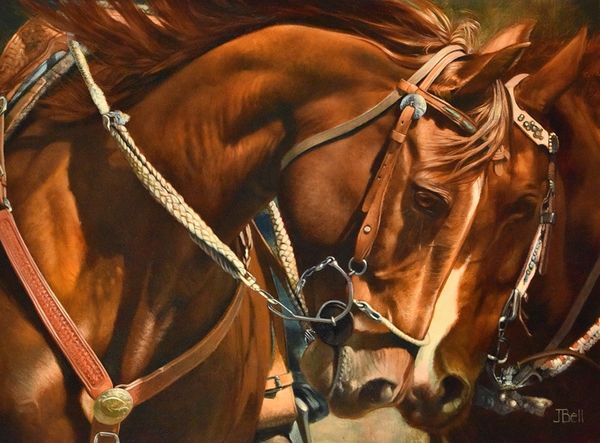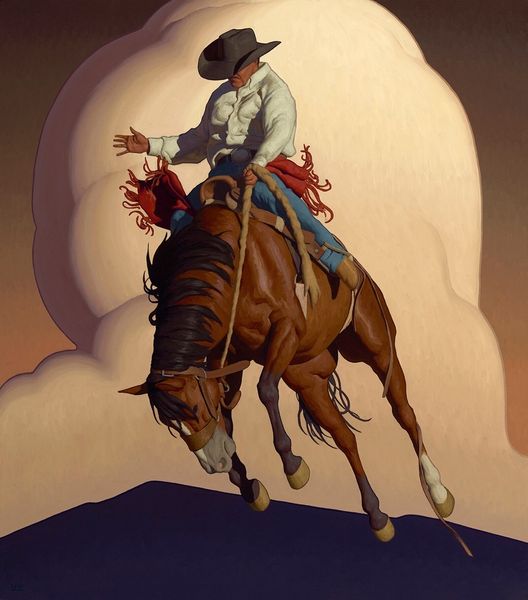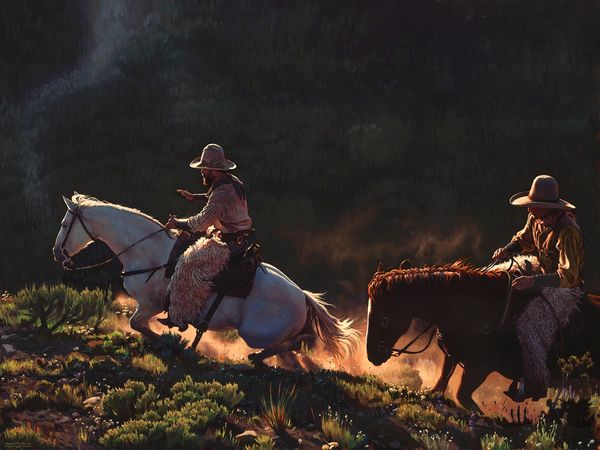
painting, oil-paint
#
portrait
#
animal
#
painting
#
oil-paint
#
oil painting
#
animal portrait
#
realism
Copyright: Modern Artists: Artvee
Curator: Here we have "Listening," an oil painting by Julie Bell, which strikes me immediately with its palpable sense of quietude and the close proximity the artist creates between us and the horse. What's your initial impression? Editor: Well, the image certainly evokes a kind of Western stoicism. The subdued color palette seems to contribute to the solemn mood, that sort of "strong and silent" trope, if you will, associated with cowboys and their relationship with animals. Curator: I'd agree with your interpretation of the “strong and silent”. But thinking about this in a larger art historical context, equine portraiture became a vehicle, especially during the 18th and 19th centuries, for projecting power, wealth, and aristocracy, it would be an interesting shift of subject in our own historical frame, if we see these values placed on animals instead of their owners, but here it seems the values lay in the working, not the owning relationship with horses. Editor: Precisely. Think about it—the horse as a symbol has shifted over time. Its symbolic association goes far beyond mere transport. As an image in our cultural vocabulary, we have an ingrained and almost instant understanding, regardless of class, around ideas of the untamed West or of rugged self-sufficiency. What could those symbols suggest? Curator: The presence of a human rider, only partially visible, anchors the work. But their face and other parts of the body are abscent. Editor: Quite so. I am sure this work touches the popular cultural lexicon through associations like cowboy iconography—consider those meticulously rendered chaps, with every tassel, for instance, telegraphing information about American Westerns. However, it feels less focused on action or triumphant conquest and more on interdependence or trust between human and animal. It is more meditative, still. What do you believe an historical overview of the work shows? Curator: My overview reveals less about its historical impact and more about its engagement within modern media. How visual tropes work through, rather than against, what has preceded it. Editor: That is also a very good analysis. All these interpretations can still give this "Listening" piece, a depth in exploring these iconographies further. Curator: Indeed. And that, perhaps, is the lasting quality it carries within itself.
Comments
No comments
Be the first to comment and join the conversation on the ultimate creative platform.
